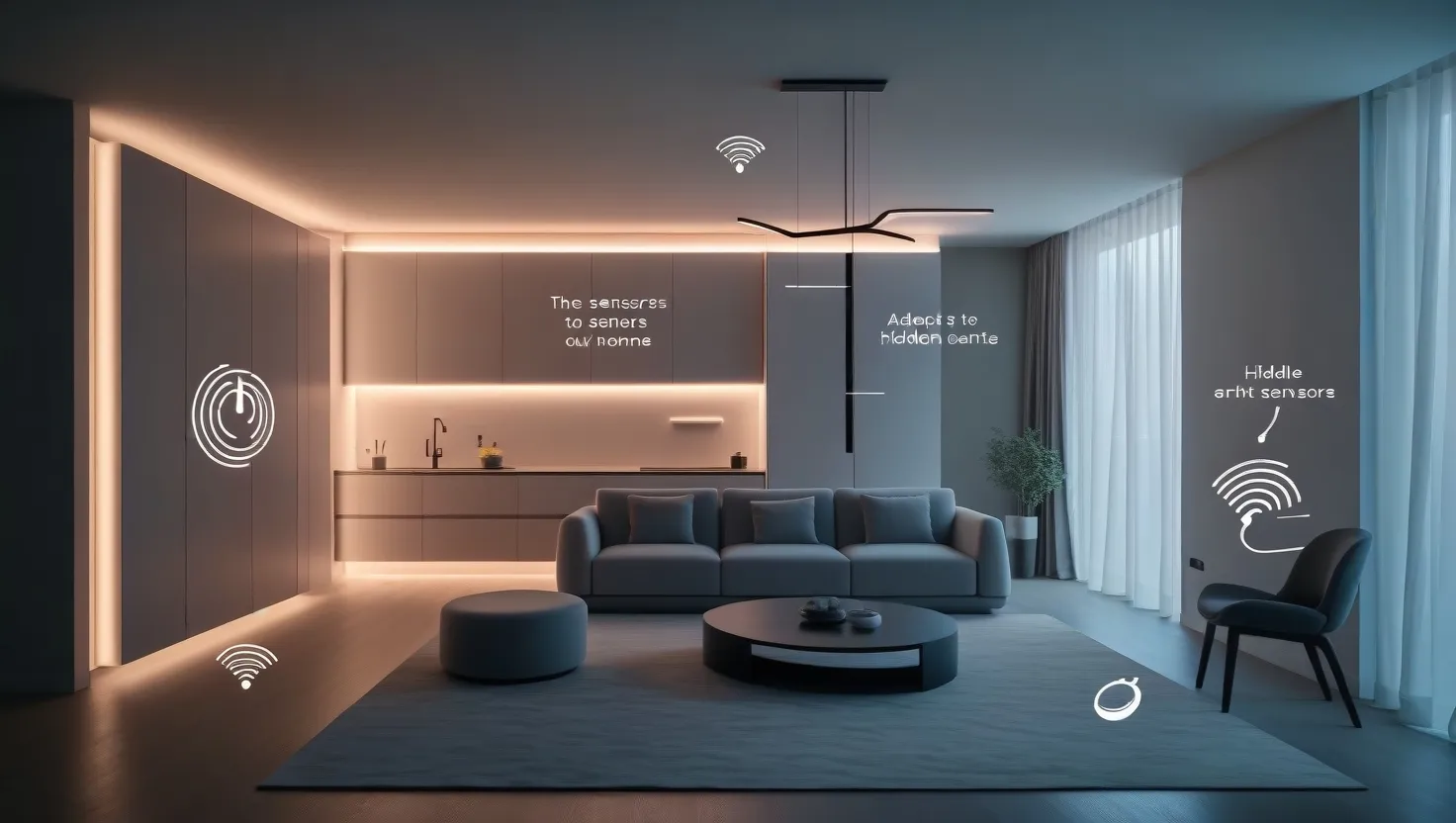Imagine waking up in a world where your surroundings are not just passive spaces, but active participants in your daily life. This is the realm of adaptive ambient intelligence, where your environment intuitively adjusts to optimize your productivity, well-being, and overall quality of life.
The Foundation of Adaptive Ambient Intelligence
At its core, adaptive ambient intelligence relies on a sophisticated interplay of sensors, artificial intelligence (AI), and subtle environmental changes. These systems are designed to monitor and interpret your physical and mental state, using this information to make real-time adjustments that support your needs. For instance, if you’re feeling stressed, the lighting in your room can soften, and calming scents can be released to help you relax. This isn’t just about creating a comfortable atmosphere; it’s about crafting an environment that actively enhances your mental and physical health.
Sensing and Responding
The heart of adaptive ambient intelligence lies in its ability to sense and respond to your activities and conditions. This is achieved through a network of sensors that monitor various aspects of your environment and your behavior. For example, motion sensors can track your movements, while environmental sensors can monitor temperature, humidity, and even air quality. These sensors feed data into AI systems that analyze and interpret the information, making decisions on how to adjust the environment to best support you.
In a home setting, this could mean that as you prepare for a workout, the room’s temperature and lighting adjust to create an energizing atmosphere. If you’re working on a critical project, the acoustics of the room can shift to minimize distractions, and the lighting can be optimized for focus. This seamless integration of technology and environment turns your space into a dynamic partner that constantly adapts to your needs.
Health and Wellness
One of the most significant benefits of adaptive ambient intelligence is its potential to improve health and wellness. In healthcare settings, ambient sensors can monitor patient mobilization, detect the use of external assistance, and track interactions with physical space. This data can help healthcare workers understand the relationship between patient mobilization and recovery, leading to more effective rehabilitation programs.
For older populations, ambient assisted living tools can be particularly beneficial. These systems use contactless sensors to monitor daily living activities, providing alerts to caregivers and facilitating emergency responses. For example, if an elderly person is at risk of falling, the system can detect changes in their gait or balance and alert caregivers to intervene promptly.
Workplace Efficiency
The benefits of adaptive ambient intelligence are not limited to home environments; they can also significantly enhance workplace efficiency. With an aging workforce facing physical and cognitive limitations, ambient assisted working tools can provide crucial support. These tools use wearable and environmental sensors, along with AI, to offer flexible workplace adaptations. For instance, the lighting and temperature in an office can be adjusted to optimize alertness and focus, while noise levels can be managed to reduce distractions.
In hospitals, ambient intelligence can improve patient throughput and increase the productivity of healthcare workers. By automating administrative tasks and providing real-time clinical decision support, these systems can reduce data fatigue and prevent data overload. For example, ambient sensors can monitor hand-washing activities to prevent hospital-acquired infections, ensuring a safer environment for both patients and staff.
Learning and Adaptation
A key aspect of adaptive ambient intelligence is its ability to learn and adapt over time. Using techniques like transfer learning, weak supervision, and meta-learning, these systems can improve their accuracy even with limited data. For instance, in a home setting, the system can learn your daily routines and preferences, adjusting the environment accordingly. If you typically start your day with a cup of coffee, the system can ensure that the coffee maker is ready and the lighting is adjusted to a warm and inviting level.
This learning capability extends to predicting your availability and activity levels. By integrating sensor data and higher-order relations between activities, the system can anticipate your needs before you even realize them. For example, if you’re about to leave for work, the system can adjust the lighting, temperature, and even the music to create an energizing atmosphere that helps you start your day on the right note.
Ethical and Privacy Considerations
While the benefits of adaptive ambient intelligence are numerous, there are also important ethical and privacy considerations to address. Ensuring data privacy and security is crucial, as these systems collect and analyze vast amounts of personal data. Transparency and explainability are also key; users need to understand how the system makes its decisions and how their data is being used.
Human-centered design is essential in this context. The system must be customized to the specific needs and context of each user, ensuring a good user experience and promoting adoption success. This involves addressing challenges such as fairness and bias, legal liability, and end-user resistance. By focusing on user-centered design, we can create systems that are not only effective but also trustworthy and respectful of individual privacy.
Future Directions
As research in adaptive ambient intelligence continues to evolve, we can expect even more innovative applications. Smart hospitals, for example, can be designed with ambient AI to improve patient care and streamline clinical operations. In daily living spaces, ambient intelligence can help people with cognitive impairments by providing timely medication reminders and adapting the environment to support their needs.
The integration of social robots is another promising area. These robots can provide social company and promote social interaction among older populations, helping to address loneliness and isolation. In the workplace, ambient intelligence can support employees with chronic health disorders by offering flexible adaptations that help them fulfill their work-related activities.
Conclusion
Adaptive ambient intelligence represents a future where technology seamlessly integrates into our lives, enhancing every aspect of our daily routines. By leveraging sensors, AI, and subtle environmental changes, these systems create responsive environments that optimize our productivity, well-being, and overall quality of life. As we continue to explore and develop this technology, it’s clear that the potential benefits are vast and transformative, offering a glimpse into a world where our surroundings are not just passive spaces, but active partners in our journey towards peak performance.






